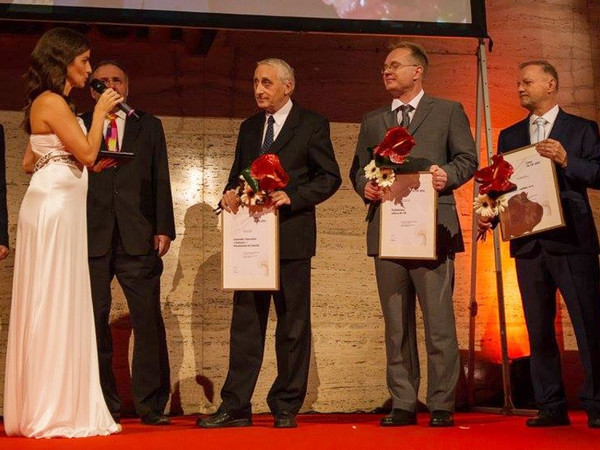Scientists from the Regional Centre of Advanced Technologies and Materials (RCPTM) and the Joint Laboratory of Optics (JLO) at Palacký University developed together with their colleagues from the Institute of Physics at the Czech Academy of Sciences and the Meopta-optika company brand new multi-layer optical systems, which will be used in the products made by this largest Czech producer in the field of optics, from Přerov. Their project was awarded by the Technology Agency of the Czech Republic as one of the best projects in applied research, in the category Originality of the Solution.
The project, called “Modern multilayer optical systems”, dealt with selected specific issues of thin optical layers and the entire systems made out of them. According to the main investigator of the project, Miroslav Hrabovský, we encounter these thin optical layers every day. They are present in practically every optical element or product, such as eyeglasses, camera lenses, cellular phones and similar devices. Without the high-quality optical layers, these products would not be sellable. The number of layers varies, from one to several dozens.
Olomouc scientists have focussed on selected parts of this vast project. “The first part of the project investigated a brand new technology utilising plasma in order to produce the optical layers and adequate measurement and control methods. Subsequently we designed and created multilayer optical systems for concrete products made by Meopta or for use in nonstandard applications, such as on large-sized optical elements for cosmic radiation research, which we developed for projects such as the Cherenkov Telescope Array, CERN, and the Pierre Auger Observatory,” said Prof Hrabovský.
Modern multilayer optical systems can be simply described as structures of several thin micro/nano layers with precisely defined optical and mechanical properties. They act as an optical system radically enhancing the parameters of the optical systems they are applied into. Research in this area has been going on for more than fifty years, but the end of their endeavour still waits. Due to technological development, thin optical layers have ever-increasing possibilities of application.
The project stemmed from the long-term collaboration of all the involved partners. The RCPTM researchers cherished the fact they were one of only four projects awarded by the Technology Agency this year. “I received the award with a sense of surprise and humbleness and also satisfaction in that our decision to apply for the project had been wise. We have officially established a team of investigators whose activities are carried on at full throttle even after the project will have been finished. It is certainly a form of appreciation to all involved parties which made this investigation possible,” concluded Hrabovský.
